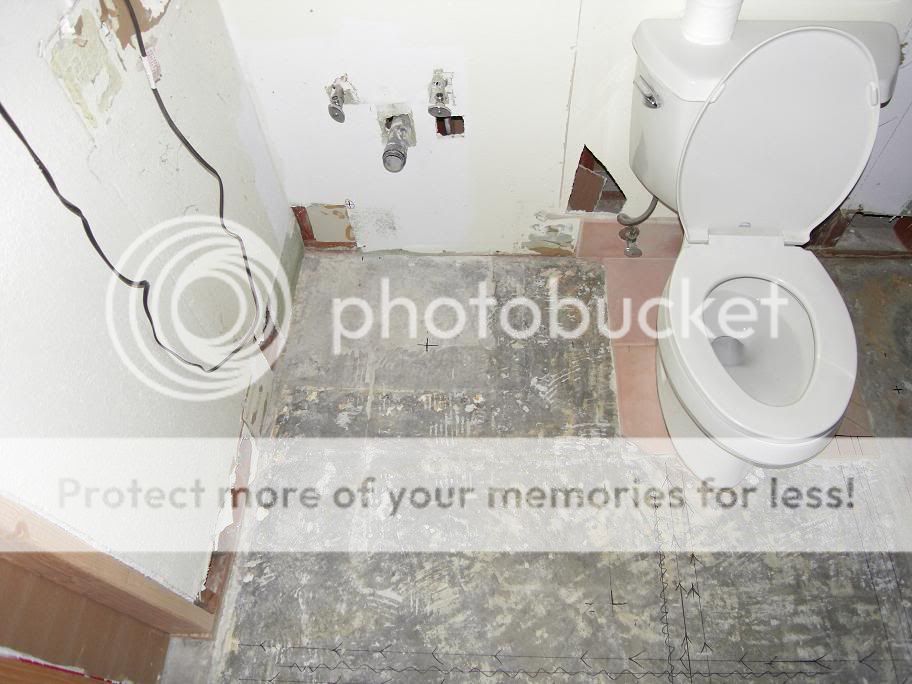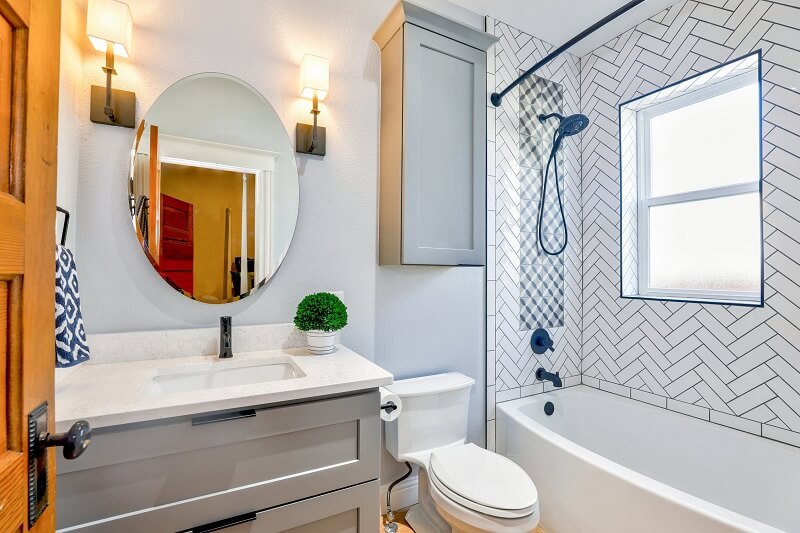Understanding the Need for Relocation

Relocating a toilet in a bathroom is a common renovation project that can significantly improve the functionality and aesthetics of the space. It is often necessary to move the toilet to optimize bathroom layout, address plumbing issues, or accommodate design changes.
Relocate toilet in bathroom – Several factors can necessitate toilet relocation. These include:
Common Reasons for Toilet Relocation
- Space Optimization: Relocating the toilet can create more usable space, particularly in smaller bathrooms. For example, moving the toilet to a different wall might allow for the installation of a larger vanity or a walk-in shower.
- Improved Accessibility: Relocating the toilet to a more accessible location can benefit individuals with mobility challenges. This might involve moving the toilet closer to a doorway or installing grab bars.
- Plumbing Issues: If the existing toilet drain is damaged or located in an inconvenient spot, relocation might be necessary to resolve the issue.
- Design Changes: When renovating a bathroom, relocating the toilet may be required to accommodate a new layout, such as an open-concept design or a wet room.
Bathroom Layouts Where Toilet Relocation Might Be Necessary, Relocate toilet in bathroom
Several bathroom layouts might benefit from toilet relocation. Examples include:
- Small Bathrooms: Relocating the toilet can create more space for other fixtures, such as a shower or vanity, and improve overall circulation.
- Bathrooms with Limited Wall Space: Relocating the toilet to a different wall can free up valuable space for other fixtures, such as a bathtub or a shower.
- Bathrooms with Obstructed Access: Moving the toilet to a more accessible location can improve usability, especially for individuals with mobility challenges.
Challenges and Considerations Associated with Toilet Relocation
While toilet relocation can improve a bathroom’s functionality and aesthetics, it presents several challenges and considerations.
Relocating a toilet in a bathroom can be a significant undertaking, often requiring plumbing adjustments and structural modifications. However, this process can be an opportunity to refresh the bathroom’s aesthetic with a new vanity, such as a 1930s style bathroom vanity , which can add a touch of vintage charm.
The choice of vanity can influence the overall design of the bathroom and create a cohesive look, complementing the new toilet location and contributing to a functional and aesthetically pleasing space.
- Plumbing Modifications: Relocating a toilet often requires extensive plumbing modifications, such as extending or rerouting drain lines and supply pipes. These modifications can be complex and costly.
- Structural Changes: In some cases, relocating a toilet might necessitate structural changes, such as cutting through walls or reinforcing floors.
- Building Codes: It is crucial to comply with local building codes and regulations when relocating a toilet. These codes may dictate minimum distances from walls, fixtures, and other plumbing lines.
- Cost: Toilet relocation can be a significant investment, involving labor, materials, and potential structural modifications.
Planning and Preparation

Relocating a toilet is a significant plumbing project that requires careful planning and preparation. This ensures a smooth process, minimizes potential issues, and helps you achieve the desired outcome.
Planning the Relocation
Planning the relocation involves considering various factors and making informed decisions. This includes determining the new location, assessing the existing plumbing and electrical systems, and obtaining necessary permits.
- Determine the New Location: Choose a suitable location for the new toilet, considering factors like accessibility, proximity to existing plumbing lines, and overall bathroom layout. Ensure sufficient space for the toilet and its fixtures.
- Assess Existing Plumbing and Electrical Systems: Evaluate the existing plumbing lines and electrical outlets to determine their suitability for the relocation. This involves checking the size and type of pipes, the location of the water supply and drain lines, and the accessibility of electrical outlets.
- Obtain Necessary Permits: Contact your local building department to inquire about permits required for the relocation project. Ensure compliance with building codes and regulations to avoid any legal issues.
- Consider the Waste Line: The waste line is the pipe that carries wastewater from the toilet to the sewer system. Relocating the toilet may involve extending or modifying the existing waste line. Ensure the waste line is properly sized and vented to prevent clogs and odor.
- Determine the Water Supply: The water supply line brings water to the toilet. Relocating the toilet may require extending or modifying the existing water supply line. Ensure the water supply line is properly sized and connected to the water source.
- Consider the Electrical System: The toilet may require an electrical outlet for a bidet, a heated seat, or other features. Assess the existing electrical system to determine if a new outlet is needed or if the existing outlet can be used.
- Design the New Toilet Location: Once the new location is chosen, create a detailed plan of the bathroom layout, including the placement of the toilet, fixtures, and other bathroom features. This helps ensure the new toilet fits comfortably and functions correctly.
Gathering Tools and Materials
A well-equipped toolbox is essential for a successful toilet relocation project. It ensures you have all the necessary tools and materials on hand, minimizing delays and frustration.
- Plumbing Tools: This includes a pipe wrench, channel locks, adjustable wrench, tubing cutter, hacksaw, and a level.
- Electrical Tools: This includes a voltage tester, wire strippers, wire cutters, and a screwdriver set.
- General Tools: This includes a hammer, measuring tape, utility knife, and a drill.
- Plumbing Materials: This includes PVC pipe, PVC glue, PVC primer, pipe fittings, drain traps, and water supply lines.
- Electrical Materials: This includes electrical wire, wire connectors, electrical tape, and electrical outlet boxes.
- Other Materials: This includes toilet wax ring, toilet bolts, toilet seat, and toilet tank lid.
Potential Plumbing and Electrical Issues
Relocating a toilet can present various plumbing and electrical challenges. Being aware of these potential issues allows for proactive planning and mitigation.
- Existing Plumbing Line Obstacles: The existing plumbing lines may be located in a way that hinders the relocation. This may require modifications or rerouting of the lines, adding complexity to the project.
- Insufficient Water Pressure: The existing water pressure may not be sufficient to support the new toilet location. This may require installing a booster pump to increase water pressure.
- Clogged Waste Line: The existing waste line may be clogged, preventing proper drainage. This requires clearing the clog before proceeding with the relocation.
- Electrical Wiring Problems: The existing electrical wiring may be inadequate or improperly installed. This may require rewiring or installing a new electrical outlet.
Execution and Installation: Relocate Toilet In Bathroom

Now that you have a clear plan and have gathered all the necessary materials, it’s time to get your hands dirty and begin the actual relocation process. This section will guide you through the steps of disconnecting and removing the existing toilet, installing the new one in its designated location, and connecting it to the plumbing and water supply.
Disconnecting and Removing the Existing Toilet
Before you can begin the installation process, you need to disconnect and remove the existing toilet. This step is crucial for ensuring a smooth transition and avoiding any potential damage to the surrounding area.
- Turn off the water supply to the toilet by closing the shut-off valve located behind the toilet or near the water meter.
- Flush the toilet to empty the bowl and tank.
- Disconnect the water supply line from the toilet tank. Use a wrench to loosen the connection.
- Disconnect the toilet from the drain pipe. Use a plumber’s wrench to loosen the nuts holding the toilet to the drain pipe.
- Carefully lift the toilet off the floor and set it aside. Be mindful of its weight and avoid any potential spills or accidents.
Installing the New Toilet
With the old toilet out of the way, you can now begin installing the new one. This process involves several steps, including positioning the toilet, connecting it to the drain, and securing it to the floor.
- Position the new toilet in its designated location, ensuring that it is level and centered. You can use a level to ensure that the toilet is perfectly aligned.
- Connect the toilet to the drain pipe. Make sure the wax ring is properly placed on the bottom of the toilet before connecting it to the drain. Tighten the nuts connecting the toilet to the drain pipe, but avoid overtightening.
- Connect the water supply line to the toilet tank. Ensure that the connection is secure and that the washer is properly installed.
- Secure the toilet to the floor using the bolts provided. These bolts will prevent the toilet from moving or shifting.
Connecting the Toilet to the Plumbing and Water Supply
The final step in the relocation process involves connecting the toilet to the plumbing and water supply. This is a critical step that requires precision and care to ensure that the toilet functions correctly.
- Connect the water supply line to the toilet tank. Make sure that the connection is secure and that the washer is properly installed.
- Connect the toilet to the drain pipe. Make sure that the wax ring is properly placed on the bottom of the toilet before connecting it to the drain. Tighten the nuts connecting the toilet to the drain pipe, but avoid overtightening.
- Turn on the water supply to the toilet and check for leaks. If there are any leaks, tighten the connections or replace the washer.
- Flush the toilet several times to ensure that it is working properly.
Relocating a toilet in a bathroom can significantly impact the overall layout and functionality of the space. This often necessitates a reassessment of the vanity area, as the toilet’s new position may influence the placement and size of the vanity.
For inspiration on stylish and practical vanity designs, explore double bathroom vanity photos to see how these elements can be integrated harmoniously. Once you have a clear vision for the vanity, you can finalize the toilet’s relocation to optimize both form and function within the bathroom.